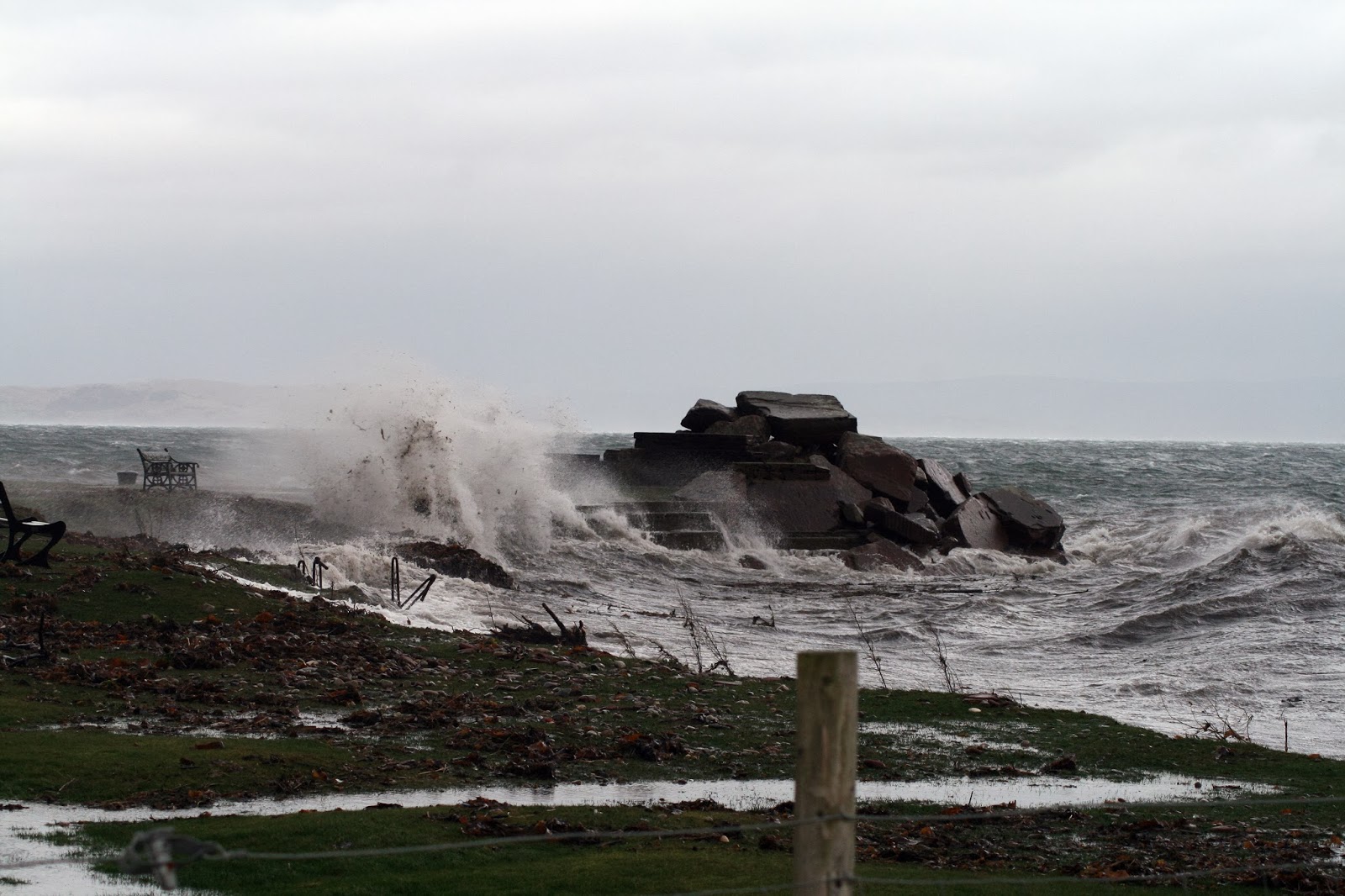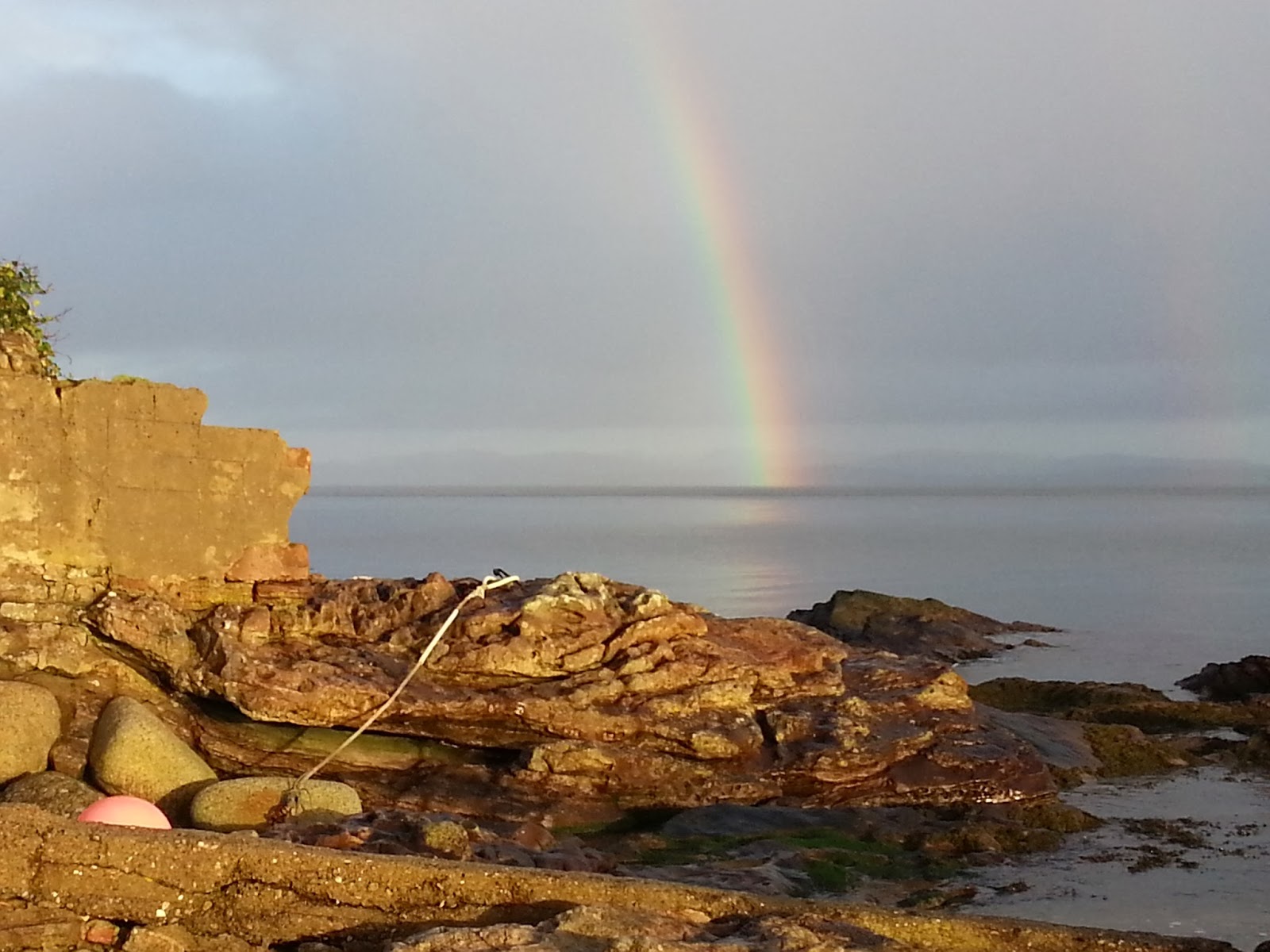 |
| Welcome to 2014, Arran 3rd January |
January 1st arrived with mild and stormy weather interspersed by long periods of continuing rain on saturated ground. After a grim December, optimism for the New Year is on hold in terms of the weather - an unsettled and wobbly jet-stream seems to have set in motion an endless stream of southwesterly water-baths.
On the 3rd January a perfect storm of sorts blew in, combining with spring tides to flood most of the Clyde basin. Exposed shoreline areas saw roads ripped apart and covered in marine debris, Ardrossan and Arran hit hard.
 |
| Arran 3rd January storms |
We were staying in Corrie in the sheltered north harbour 'Wee Zephyr' cottage (a rather ironic name), accompanied by an unconcerned otter fishing the harbour bay, but still found both north and south roads impassable for a while at Sannox and Maol Donn shores.
 |
| New Year companion |
Walks were the order of the day to shake off the alcoholic lethargy of New Year, up to the waterfalls at North Glen Sannox (golden eagle territory, the Hutton 'intrusion') and the iron age forts in North Sannox.
 |
| Hutton's intrusive proof of vulcanism |
Higher ground remained wind-blown and swathed in impenetrable cloud, so we left this for longer summer days.
 |
| Pete and Sarah in sodden North Glen Sannox |
I managed one sunny afternoon bouldering on Arran in between the fronts, at The Mushroom in Merkland Wood, part of the National Trust's grounds. The newly-cleaned rock of 2013 was remarkably dry for such a dousing, thought the slabby top-outs are still green, not surprisingly. It will take a concerted dry spell for the finishes to come into nick Still, it's a fine venue amongst the tall, swaying Scots Pines and to be noted are some hard project lines tucked in the left cave on the south face if it dries out enough to work.
 |
| Merkland Wood |
Delayed ferries were the order of the week, Calmac diverting to Gourock to avoid the windswept Ardrossan, the Clansman boat was called in and many frustrated passengers, including Lord Jack McConnell of Glencorrodale, were getting red around the chops with Calmac's backlogs. The Arran Banner was incandescent with editorial rage, and rightly so, for island businesses taking the hit of an inadequately-appointed ferry fleet around the busiest time of year, though the Scottish weather is top trumps in this affair. To add insult to injury, Calmac delayed boarding on a sodden Saturday 4th to perform a fire-drill. Cue a rolling of eyes.
 |
| Corrie end of 2013 |







